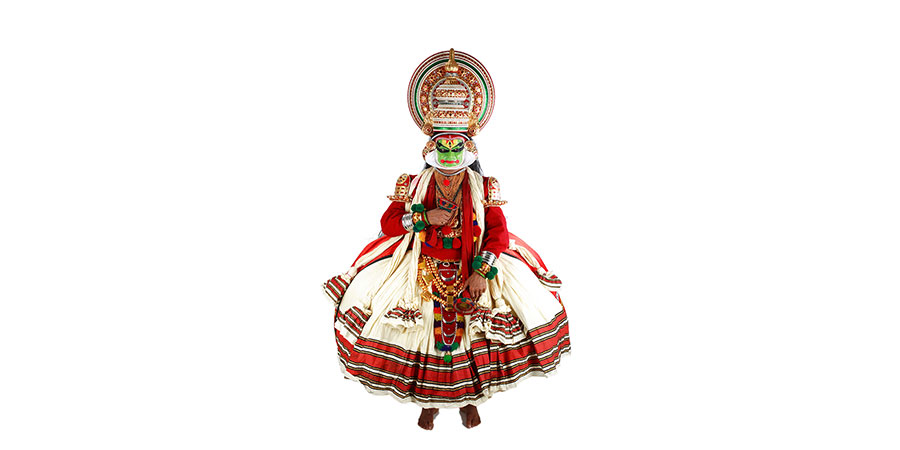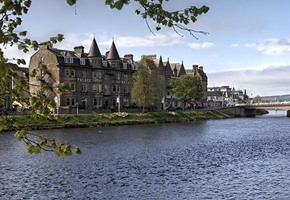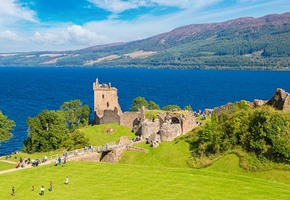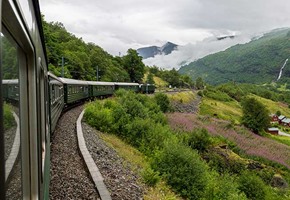World Ballet Day is upon us and to join in with the celebrations we thought we'd give you the low down on our favourite, and some of the most impressive dance forms we've encountered from around the world.
Kathakali
In the exotic south of India lies the relaxed state of Kerala. But at Kerala Kalamandalem things are far from relaxed. Here students begin their long, 12-year journey to master the art of Kathakali - a unique dance form that has prospered here since the 17th century. Embodying the 'story play' aspect of performance, much as western ballet has, Kathakali re-enacts Hindu tales, local legend and folk mythology in dramatic style. At Kalamandalem they take their studies seriously, and teachers here have been helping pupils get to grips with the art form's synthesis of music, vocal work, choreography, hand and facial gestures for the past 87 years, but one of the main areas the dancers-in-training need to focus on are their eyes. Windows to the soul, Kathakali performers need to learn how to be in command of their eye movements completely, in order to use them to convey the huge range of human emotions to their audiences. They also use striking eye make up to emphasise this and wear outrageous costumes which must be exceedingly difficult to move in - you'd never know watching these mesmeric artists who make it all look so easy though. It takes each dancer around four hours to prepare for a performance, and if you're lucky enough to ever attend one of their shows in the flesh, we're sure you'll agree it truly is a sight to behold.
Javanese ballet
A mixture of controlled and deliberate (yet entirely hypnotic) movements, pantomime style villains and stage combat all set to a haunting vocal soundtrack and punctuated by crashing cymbals and quavering zithers, Javanese ballet is a serene experience performed with diligent finesse. Its stately appearance is unsurprising if you consider its origins in the royal court of Java during the 16th century (though the chronicled history of Javanese ballet is notoriously difficult to piece together). Unlike Kathakali which is rather more boisterous, in Java teaching young people these dances was a way of preparing them for their future, a kind of social training. Javanese people place high importance in emotional control and avoidance of conflict, and these dances were seen as a way of preparing children and easing them into the behaviours expected of them as they grew up, as well as being entertainment. Unlike ballet forms we're more familiar with, steps are taught through osmosis, with students copying the teacher who will make slight adjustments when needed as less importance is placed on precise techniques. Each piece tells a different story important to Javanese culture and tradition for example, Srimpi (a courtly dance) has four dancers who move in unison in graceful mirrored pairs, roles which used to be performed only by princesses of the ruling family. They portray duelling Amazon fighters who dodge and feint with meditative grace.
Khmer dance
Another courtly ritual developed in southeast Asia, Cambodia's classical Khmer routines can be broken into three main categories; classical dance of the royal court used for invocation, entertainment and to pay homage, folk dance which portrays cultural traditions, and social dances performed in community gatherings. Most popular however are the more ritualised performances of Robam Preah Reach Trop (dances of royal wealth) which is highly stylised and narrative led and designed to invoke spirits as well as pay homage to royalty and visiting dignitaries. So revered as an art form, it wasn't until the 20th century that these routines were made more accessible to the general public and now they are revered across the entire Kingdom of Cambodia, being used to celebrate national holidays and welcome visitors to the country. While, like Kathakali, Khmer dancers make use of props and elaborate costumes, the focal point of these dances is more on the hands, which bend and twist in unimaginable ways to help convey meaning. Each gesture, or kbach, forms a kind of alphabet, representing objects from nature such as fruit, flowers and leaves. They are used in different combinations and when considered in conjunction with arm movements and foot placement, help communicate more complicated thoughts and concepts.
Irish dance
Taking its influence from the French quadrilles and English country dancing techniques of the 18th and 19th centuries, Irish dancing has a set of very complicated rules, styles and time signatures. For a brief overview consider the following;
"There are four soft shoe dance styles: the reel, slip jig, light jig and single jig (also referred to as hop jig). Reels have a 4/4 (or sometimes 2/4 or 2/2) time signature. Slip jigs are in 9/8 time. Light and single jigs are in 6/8 time, with different emphasis within the measure distinguishing the music. Hard shoe dances include the hornpipe in syncopated 2/4 or 4/4 time, the treble jig (also called the heavy jig or double jig) in a slow 6/8, the treble reel (hard shoe dance done to reel music) and traditional sets, which are a group of dances with set music and steps. Many traditional sets have irregular musical phrasing. There are also more advanced "non-traditional sets" done by advanced dancers. These have set music, but not steps. There are multiple traditional sets, including St. Patrick's Day, Blackbird, Job of Journeywork, Three Sea Captains, Garden of Daisies, and King of the Fairies."
Riverdance, which is something that came of age in my youth and helped inspire an impassioned and long-lasting love of dance, reimagined this more traditional form and introduced sweeping and evocative allegories as well as less stringent regulations about what dancer's arms and faces were allowed to do. It also made it more an ensemble art form, whereas previously much of the stepping community performed solo. However much or little you understand about what you're watching though, a ticket to a Celtic Steps show is bound to leave you in awe of what these athletes can achieve, your toes tapping along to the jaunty tunes for days to come.






